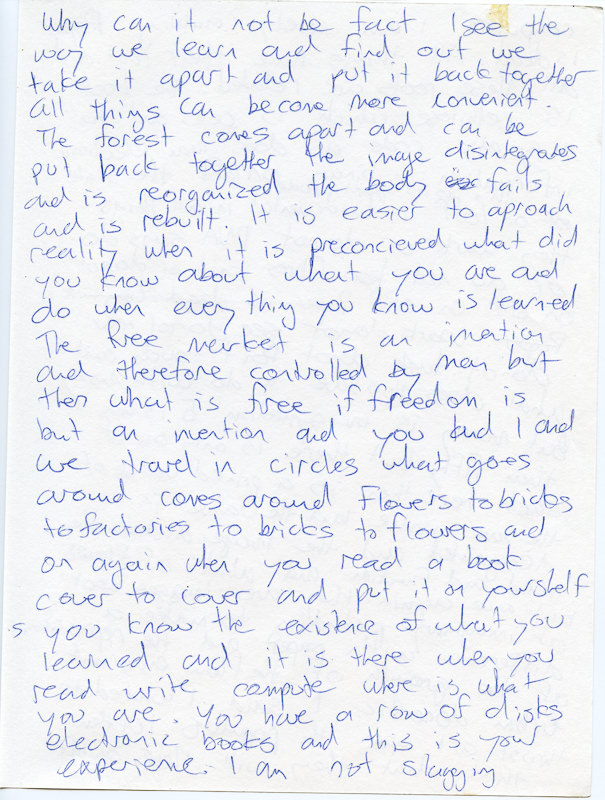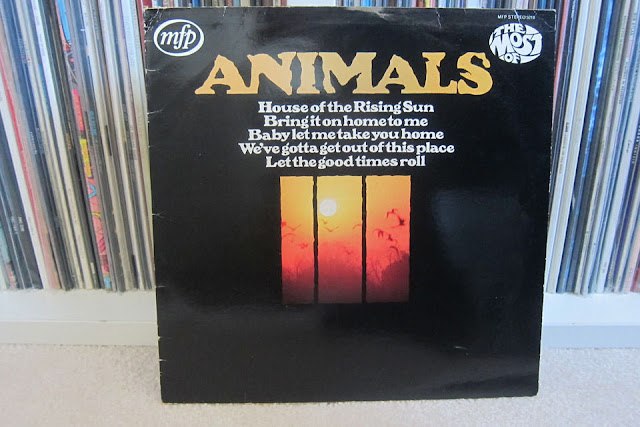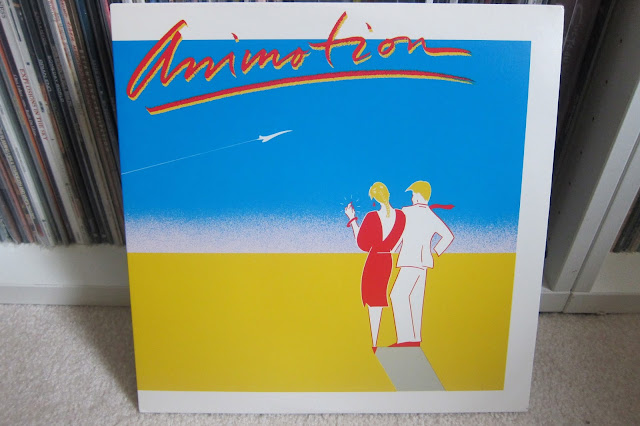Caution: Before you read on, consider your choices.
If you arrived here from my website, the i48 video or
elsewhere on the internet, you might want to read a physical copy of Iconometer 48 first. You can get a copy
from my storenvy shop here:
http://mynameizedwin.storenvy.com/products/19086370-iconometer-48-an-artists-book-by-edwin-jager
http://mynameizedwin.storenvy.com/products/19086370-iconometer-48-an-artists-book-by-edwin-jager
You can virtually read Iconometer 48 here: https://vimeo.com/176554604
Maybe you have access to the analog version, but clicked on
the QR code, watched the video and want to keep your experience virtual. If so,
you’re ready to read on!
Or, you have read the printed version and you’re ready to
learn more.
Please proceed with your chosen method of delivery.
Early in 2015, I received a package in the mail from my
mentor, Wendy Cain who retired in June 2015, from teaching printmaking and
papermaking at the Ontario College of Art, Ontario College of Art and
Design, Ontario College of Art and Design University (it was the Ontario
College of Art when I went there http://www.ocadu.ca/about/history.htm)
I believe that these writings were composed over a couple of
years while I was an undergraduate at OCA. OCAD, OCAD U and must
have served as a manifesto of sorts. Here’s some of my recollection of the
projects with some supplemental scans from notebooks of the time.
 |
|
Edwin Jager: Notes
exploring the connections between a series of ongoing projects.
1990-1994 |
 |
|
Edwin Jager: Notes
exploring the connections between a series of ongoing projects.
1990-1994 |
Paper Is Dead. Long
Live Paper
When I was in high school and working as a docent at the
Kitchener-Waterloo Art Gallery, I saw an exhibition of handmade paper and book
art. I had never seen handmade paper and books before and was totally
fascinated, immediately doing what research I could into the papermaking
process. With my buddy, Ron Hewson (http://www.chesleyhouse.net/ron-hewson),
we built some rudimentary screens and used a blender to grind up some recycled
paper into pulp. We bought some offcuts from the Rumpel Felt Company to
transfer (couche) the wet pulp from the screen for the process of drying. I
don’t remember how we pressed the paper but we actually managed to make a few
really crappy sheets.
Needless to say, when I found out that OCA had papermaking
equipment and that you could use the facilities, I was really excited and
attended an orientation session in my first semester, only to find out that you
had to be enrolled in a printmaking class to use the shop. This motivated me to
talk my way into Wendy’s serigraphy class without the prerequisites (I told her
I had learned EVERYTHING about screenprinting in high school, only to
completely screw up my first print at OCA) and not only get into the paper
facility but also to explore all of the other things printmaking had to offer. So,
I spent my four years at OCA making a lot of paper: sheets, pulp-paintings,
sculpture and castings (and printing too, and books!).
Paper was on my mind constantly and what I perceived to be
its shifting role in society. “Paper Is
Dead. Long Live Paper” was a way of engaging with these issues. It’s pretty
interesting to read some twenty odd years later, especially considering how
much we have debated the future of the book over the years. I was somewhat
focused on television and didn’t really have any notion about the changes that
the internet would bring about. This text may have been inspired by a
conversation I overheard around the time while riding the streetcar. Several
pre-teen boys got onto the car and one of them very loudly proclaimed, “Books?
Books are dead. It’s been television since the 70s.”
 |
|
Edwin Jager: Paper
is Everywhere! 1990-1994
|
For your entertainment, I’m including scans of some early drafts of this statement, although, fair warning! I was really into writing in a stream-of-consciousness style at the time, so…it gets a bit tedious and incomprehensible in places. The debate over the long-term health of paper continues. Here’s an article, posted by a radio/tv broadcaster on facebook (of course) called, “Why paper is the real ‘killer app’”: http://www.bbc.com/capital/story/20170120-why-paper-is-the-real-killer-app
 |
|
Edwin Jager: An
early draft of the “Paper is Dead. Long Live Paper.” manifesto.
1990-1994 (page one) |
 |
| Edwin Jager: An
early draft of the “Paper is Dead. Long Live Paper.” manifesto.
1990-1994 (page
two)
|
 |
|
Edwin Jager: An
early draft of the “Paper is Dead. Long Live Paper.” manifesto.
1990-1994 (page three) |
 |
|
Edwin Jager: An
early draft of the “Paper is Dead. Long Live Paper.” manifesto.
1990-1994 (page four) |
 |
|
Edwin Jager: An
early draft of the “Paper is Dead. Long Live Paper.” manifesto.
1990-1994 (page five) |
 |
|
|
Bark
We used to take regular trips down to the Toronto Forestry
wood dump for free and interesting materials. I found a few pieces of bark that
had been stripped from some large old trees. The largest piece was about a square
yard (0.836127m2)
and my friend Allen MacDonald made some really awesome latex molds of them that
I was going to cast in recycled paper pulp. I had this idea to “build” trees
from component parts—trees get cut down, reduced to cellulose and then rebuilt
as sheets of paper, then pulped up and put together as facsimiles of nature in
the gallery— but the project was too huge, the material of the mould meant that
I couldn’t get the pulp to dry properly and, well, sadly, I never got back to
the project eventually losing the moulds when I moved.
 |
|
Edwin Jager:
Notes related to the “Bark” project. 1990-1994
|
Money
I had
this idea to print my own currency as a way of exploring the disconnect between
the perceived or designated value of something versus its actual value. I got
as far as consulting with my buddy Mike Doxey’s (http://www.mdoxey.com) dad (he was an economics
professor) who persuaded me that it would actually be illegal for me to print
my own money as a competitor to the Canadian dollar. So, I had a plan to make
up a country and create its currency but as it got more and more complicated I
lost interest in the project. Funny, I was just reading this article on bitcoin,
that seems to have parallels: http://www.e-flux.com/architecture/superhumanity/68703/blockchain-future-states/. For an example of a well-known
alternative, there’s Canadian Tire Money: https://en.wikipedia.org/wiki/Canadian_Tire_money
 |
|
Edwin Jager: Notes
and sketches for the “Money” project. 1990-1994
|
Contrary
to most of the other projects, I actually completed this one. I’ll drop a picture in here for your entertainment but I plan on discussing it
in more detail in a future blog post.
 |
|
Edwin Jager: Documentation
of the Urban Beautification Project installation.
1990-1994
|
Paper Wall (forest)
 |
|
Edwin Jager: Notes
and sketches for the “Forrest” project. 1990-1994
|
 |
|
Edwin Jager: Response
letter to “Forrest” project proposal. 1990-1994
|
 |
|
Edwin Jager: “Forrest”
project proposal. 1990-1994 (page one)
|
 |
|
Edwin Jager: “Forrest”
project proposal. 1990-1994 (page two)
|
 |
|
Edwin Jager: “Forrest”
project proposal. 1990-1994 (page three)
|
 |
|
Edwin Jager: “Forrest”
project proposal. 1990-1994 (page four)
|
Notes on i48
Along the way, the issue has become a tribute to Wendy. When I really wanted to make paper, Wendy gave me a chance. She taught me so much and also served as my faculty advisor. It was Wendy who first suggested a subscription program for Iconometer and she was also the first subscriber. I can say, without exaggeration, that I wouldn’t be where I am today without Wendy’s advice and mentorship. It’s a loss for the students at




Comments
Post a Comment